Breakfast out: coffee, eggs, biscuit, country fries - $10.00. Holy Toledo, what a price. So we tipped the waitress more than usual. Our goal was Myakka State Park about 55 miles from our campground. Good chance to see what interior Florida is like: lots of orange groves, some picked and some ready to be picked, lots of cattle on large ranches and lots of water - lots of small ponds, lots of water in the ditches lining the roads, lots of water in the fields, I don’t think we’ll get a desert hike in this trip.
The park, which was created and developed in 1934 by the Civilian Conservation Corps, is comprised of wetlands, acres of prairies, 39 miles of hiking trails and subtropical forests.
We got to the park and signed up for both tours: the water tour and the land tour and, the boat was leaving as soon as we could get on it. What timing. We actually were interested in seeing some alligators - typical tourists. Certainly not something I’ve been seeing in Iowa nor in the desert Southwest where we’ve been spending our winters. Since we have been in Florida for 6 weeks now and have never seen an alligator I’m thinking that they are merely advertising hype to lure tourists. But, we’ll try today on our boat tour.
We had a guide that had been here for 11 years and he knew his stuff. He rattled on about Blue Herons, Egrets (all 3 kinds) anhingas, a new bird that I hadn’t seen yet. However, as he was talking about them, I realized that we had seen one recently, which I thought was a cormorant. They have no oils in their feathers so have to spread them out to dry them. Like this. (So what do they do on a rainy day?)
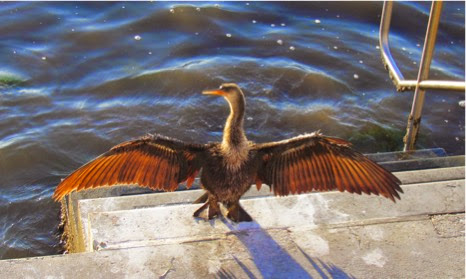
Since they swim with only their necks and head out of water, their wings tend to get wet quite often.
Of course, the birds were just the appetizer for the main show which was across the lake: the alligators. It was so windy today that there were almost white caps on the water so our guide knew that they gators would be sunning themselves on the other shore to get the full sun. They like the sun. Sure enough, he found quite a lot of them sunning themselves on the opposite shore hidden amongst the grasses. He told us that these were female alligators since females gather in groups while males live singly. In fact, one of the predators that the females need to protect their young from are the males. He told us that most alligators die young, very few make it to adulthood.
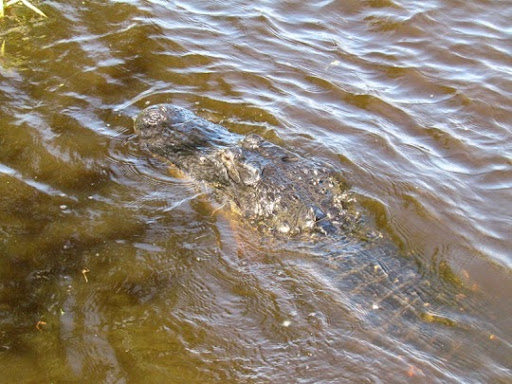
Males are pretty territorial and live mostly alone. They come around during mating season, eat a few small baby alligators, do their thing and leave for 6 months when they reappear and repeat. Poor baby alligators - they have a lot of predators and male alligators are one of them. It takes 3 years of growing a foot a year to become almost too big to be a prey. No wonder so few reach adulthood - well, maybe that’s best. Actually alligators in the wild live approximately 35 - 50 years, in captivity 60 - 80 years. But, since there is no way to tell an alligator’s age while it is alive, we don’t know.
By the way, I learned that it is temperature in the nest which determines sex: male develop in the warmer temperatures of the nest and and female in the cooler temperatures. Nests must be predominantly cold since many more females are born than males.
80 teeth? Yep, that’s how many an average alligator has and they keep replacing those that wear down. Alligators can run 30 mph for short distances - I’m thinking I don’t want to test how far one can run.
Now, I’ve always wondered about kayaking in waters where alligators are known to exist, which, it seems, in Florida, are just about every instance of water. Our guide told us that alligators seldom go after humans because they are too big to fit into their mouths and seldom during the day when the temperatures are hot. He cautioned us about kayaking in the evening when they are looking for food. Now, an inflatable kayak? Not something I’d do.
We really enjoyed the boat tour and were ready for the land tour.

This was more about the history of the Myakka SP rather than the sighting of animals. About the heiress from New York who came down here, loved it and bought a huge ranch, with no knowledge of how to run it. She tried to hire the previous manager but he didn’t want to work for a woman so she went to the manager’s wife and promised her a 2-story house and you can guess the rest. The manager rethought his priorities and changed his mind about working for a woman. The ranch was profitable but her sons were not interested in it and gave it to the state as a park.
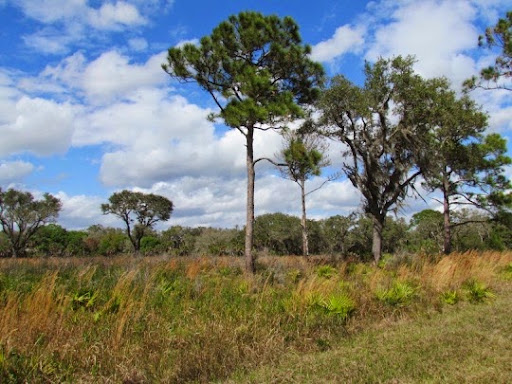
On our tour of the ranch lands, we saw the fields where the cattle had grazed - obviously it took lots of work to clear these fields since the rest of the area was thick with slash pine and palmetto. We also saw a mother alligator with 2 babies sunning on her back.
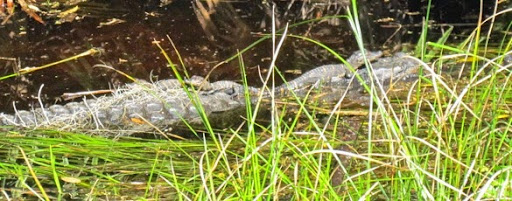
After our two tours we drove through the park to the 100’ canopy walkway. 25’ above the ground gives you a great view of the treetops.
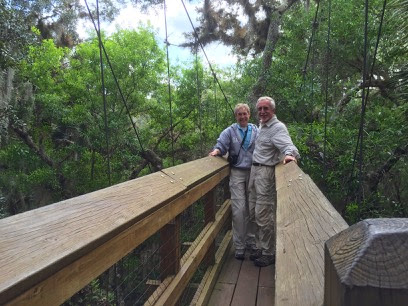
Here are some resurrection ferns. Tight after a rain, like the one we had yesterday, they are glistening green.
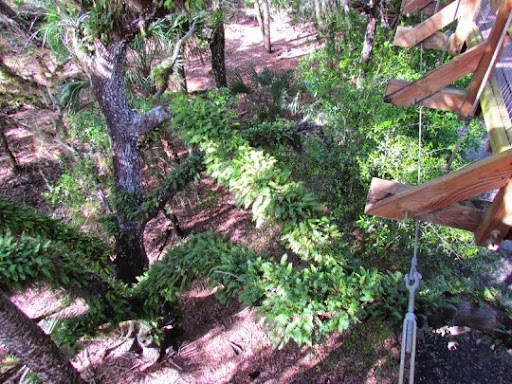
They they go dormant - until the next rain. These just covered the trees we saw from the walkway. The walkway sways as you walk over it and the warning is that only 2 can be on the walkway at one time.
The walkway leads to the 74’ tower which gives a spectacular view of the surrounding countryside. High above the tree tops, we could see for miles. The tower creaks and sways in the breezes. Ummm.
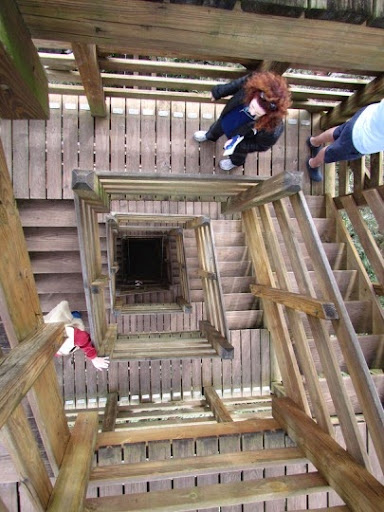
Marvelous time in Myakka SP: boat ride, land tour, tower, canopy walkway - egrets, great blue herons, anhingas, alligators, baby alligators - could we want any more?

No comments:
Post a Comment